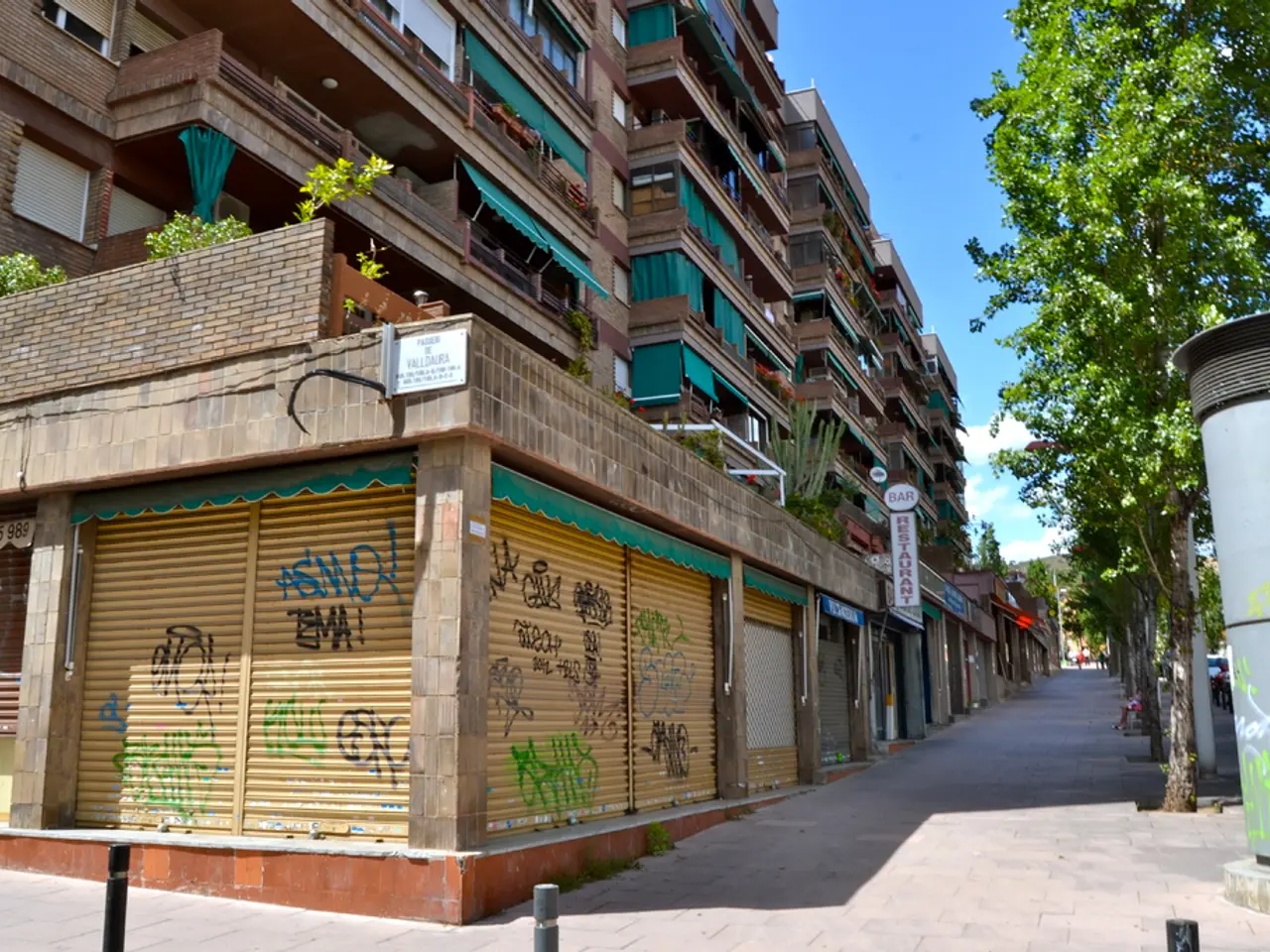Enhancing Livability Beyond Energy Efficiency: The Impact of Sustainable Design!
In the realm of modern construction, sustainable design is no longer a niche concept but a crucial approach that extends from the planning and building of entire communities to the design of individual spaces. This design philosophy prioritises well-being, environmental impact, and the creation of spaces that set a standard for a more livable future [1].
One of the key aspects of sustainable design is improving indoor air quality. By choosing low- or zero-VOC (volatile organic compound) materials, designers can significantly reduce the emission of harmful chemicals into the interior environment [1][2]. Advanced ventilation systems, which continuously bring in fresh, filtered air while expelling pollutants, further contribute to a healthier living and working space [2][5]. Indoor plants, which can purify the air by absorbing toxins and producing oxygen, are another valuable addition [3]. These strategies collectively reduce the risk of respiratory issues and allergies, supporting occupant health and well-being [1][5].
Natural light plays a significant role in sustainable buildings. Through thoughtful site orientation, strategically placed windows, and the use of light shelves or reflective surfaces, designers can maximise natural daylight, reducing reliance on artificial lighting and lowering energy consumption [2][3]. Natural lighting also supports mental wellness, mood, and productivity by aligning with human circadian rhythms [1][2]. Combining daylighting with energy-efficient LED lighting ensures that even when artificial light is needed, it is used minimally and effectively [2][3].
Sustainable design fosters a stronger connection to nature by incorporating views of green spaces, access to outdoor areas, and the integration of natural elements indoors, such as living walls or indoor gardens [2]. Acoustic insulation, ergonomic layouts, and flexible spaces further enhance well-being, making the indoor environment more restorative and comfortable [2]. These features help reduce stress, improve mental health, and create a sense of harmony between the built environment and the natural world.
At the community level, sustainable architectural design contributes to sustainable practices, protecting local ecosystems and biodiversity [2]. Compact, efficient designs reduce urban sprawl and encourage denser, walkable neighbourhoods with access to public transit, cycling, and pedestrian pathways—reducing car dependence and lowering the community’s overall carbon footprint [2]. Energy-efficient buildings with renewable energy systems (e.g., solar panels) not only cut individual utility bills but also contribute to a grid powered by clean energy, benefiting the entire community [1][3]. Water conservation measures, such as rainwater harvesting and native landscaping, help communities manage resources more responsibly, especially in water-stressed regions [1].
In conclusion, sustainable architectural design creates healthier indoor environments through improved air quality and abundant natural light, while fostering a meaningful connection to nature. When scaled to the community level, these principles promote resource efficiency, environmental stewardship, and social well-being, laying the foundation for truly sustainable communities [1][2][3]. Firms like Barge Design Solutions Nashville, with their expertise in translating a vision into a space that fosters well-being, reduces environmental impact, and sets a standard for a more livable future, are at the forefront of this movement. When choosing a design partner, it's essential to seek out those who understand the broader definition of sustainability, including a holistic vision of healthy and vibrant spaces.
- In the pursuit of sustainable living, technology plays a pivotal role, particularly in automation, as it enables the efficiency and optimization of home-and-garden systems, such as irrigation and lighting.
- Data-and-cloud-computing can serve as a valuable tool in the distribution of sustainable practices within communities, tracking consumption patterns and offering insights on how to minimize energy use and encourage eco-friendly habits.
- Integrating sustainable-living principles in the distribution and automation of modern home-and-garden systems, as well as promoting a lifestyle rooted in efficiency and respect for the environment, ultimately contributes to a more livable future that benefits all members of the community.



